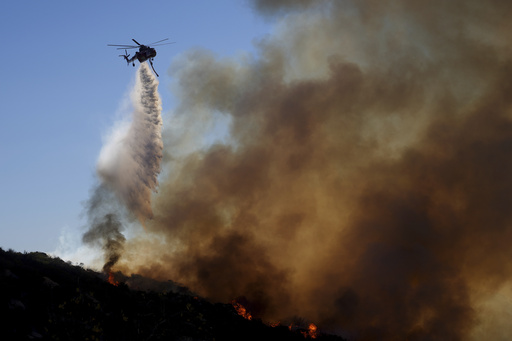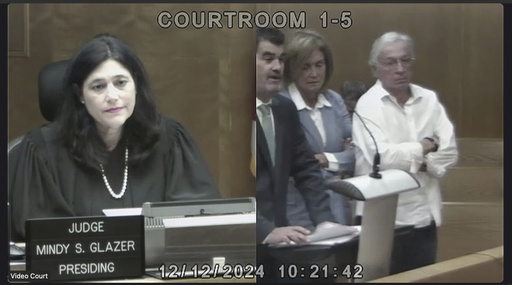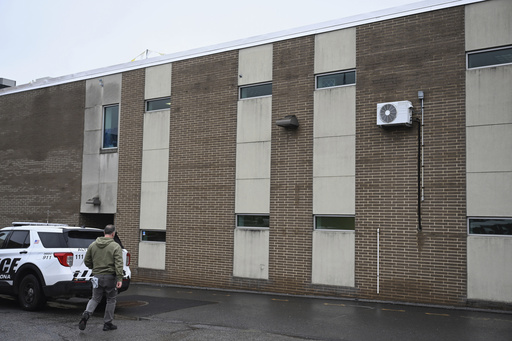Firefighters Gain Ground as Winds Ease in Southern California
Calmer winds and increased humidity are aiding firefighters battling the Franklin Fire in Southern California, which has forced thousands of residents, including celebrities and college students, to evacuate Malibu.1
The fire, which has burned 6 square miles and is only 7% contained, was fueled by strong Santa Ana winds on Monday.While nine structures have been destroyed and six damaged, improved weather conditions allowed firefighters to make significant progress on Wednesday.
Evacuation orders remain in place for approximately 20,000 residents. The fire has impacted Malibu, a coastal community known for its scenic beauty, causing significant damage to homes and businesses, including Pepperdine University, where students were temporarily sheltered.
Celebrities such as Cher, Jane Seymour, and Dick Van Dyke were also among those evacuated.
The cause of the fire remains under investigation.
The idyllic Southern California coastline, renowned for its sun-drenched beaches and celebrity-studded mansions, was thrown into chaos as the Franklin Fire erupted on a late October evening. Fueled by the notorious Santa Ana winds, the blaze tore through the picturesque canyons of Malibu, forcing thousands to flee their homes and leaving a trail of destruction in its wake.
The scene unfolded dramatically. Strong, erratic gusts, exceeding 40 miles per hour, whipped through the region, fanning the flames into a ferocious inferno. The fire, ignited by an as-yet-undetermined cause, quickly gained momentum, leaping across the iconic Pacific Coast Highway and menacing the oceanfront. A blanket of smoke choked the air, turning day into an eerie twilight, while the roar of the flames echoed through the canyons, a terrifying symphony of destruction.
Malibu, a community nestled between the rugged Santa Monica Mountains and the Pacific Ocean, found itself under siege. Residents, many of whom had weathered previous wildfires, were confronted with a stark reminder of the region’s vulnerability to these unpredictable forces of nature. Fear mingled with the acrid smell of smoke as residents scrambled to evacuate, grabbing essential belongings and fleeing for safety.
The impact of the fire was widespread and devastating. Homes, some of which had been meticulously crafted over decades, were reduced to ashes. The flames spared no one, consuming both modest dwellings and opulent estates belonging to Hollywood A-listers. Celebrities, accustomed to the limelight, found themselves thrust into the role of evacuees, their stories of escape adding to the human element of the unfolding disaster.
Among those forced to flee were iconic figures such as Cher, Jane Seymour, and the legendary Dick Van Dyke, who, at 99 years old, recounted a harrowing escape with the assistance of his neighbors. “I was trying to crawl to the car. I had exhausted myself. I couldn’t get up,” Van Dyke shared with NBC News, “And three neighbors came and carried me out, and came back and put out a little fire in the guesthouse and saved me.”
The fire also disrupted the lives of thousands of students at Pepperdine University, a prestigious institution nestled within the hills overlooking the Pacific. The campus was placed on lockdown, with students sheltering in place, classes suspended, and final exams postponed. The university community rallied, providing support and resources to those affected, while faculty members devised alternative methods for students to complete their coursework.
Beyond the immediate threat to life and property, the fire also exposed the fragility of the region’s infrastructure. Power outages, a precautionary measure to prevent downed power lines from igniting further fires, plunged communities into darkness, disrupting essential services and leaving residents without electricity for days. The economic impact was significant, with businesses forced to close, tourism disrupted, and the local economy reeling from the devastation.
However, amidst the chaos and destruction, stories of resilience and community spirit emerged. Neighbors helped neighbors, strangers offered assistance, and first responders tirelessly battled the flames, risking their own safety to protect lives and property. Evacuation centers were established, providing shelter, food, and emotional support to those displaced by the fire.
The fight against the fire was a complex and challenging undertaking. Firefighters, battling treacherous terrain and unpredictable winds, worked tirelessly to contain the blaze. Aerial support, including helicopters and planes dropping fire retardant, played a crucial role in slowing the fire’s advance. As the winds subsided and humidity levels increased, firefighters gained ground, gradually bringing the inferno under control.
The Franklin Fire served as a stark reminder of the power of nature and the importance of preparedness. It highlighted the need for robust wildfire prevention strategies, including improved forest management, controlled burns, and the strengthening of power grids to withstand extreme weather events. The experience also underscored the importance of community resilience and the vital role that first responders play in protecting lives and property during times of crisis.
In the aftermath of the fire, the focus shifted to recovery and rebuilding. The community faced a long road ahead, with the daunting task of assessing the damage, clearing debris, and rebuilding homes and lives. The scars of the fire would remain, but the spirit of resilience, so characteristic of the Southern California spirit, would undoubtedly guide the community through the challenging months and years ahead.






